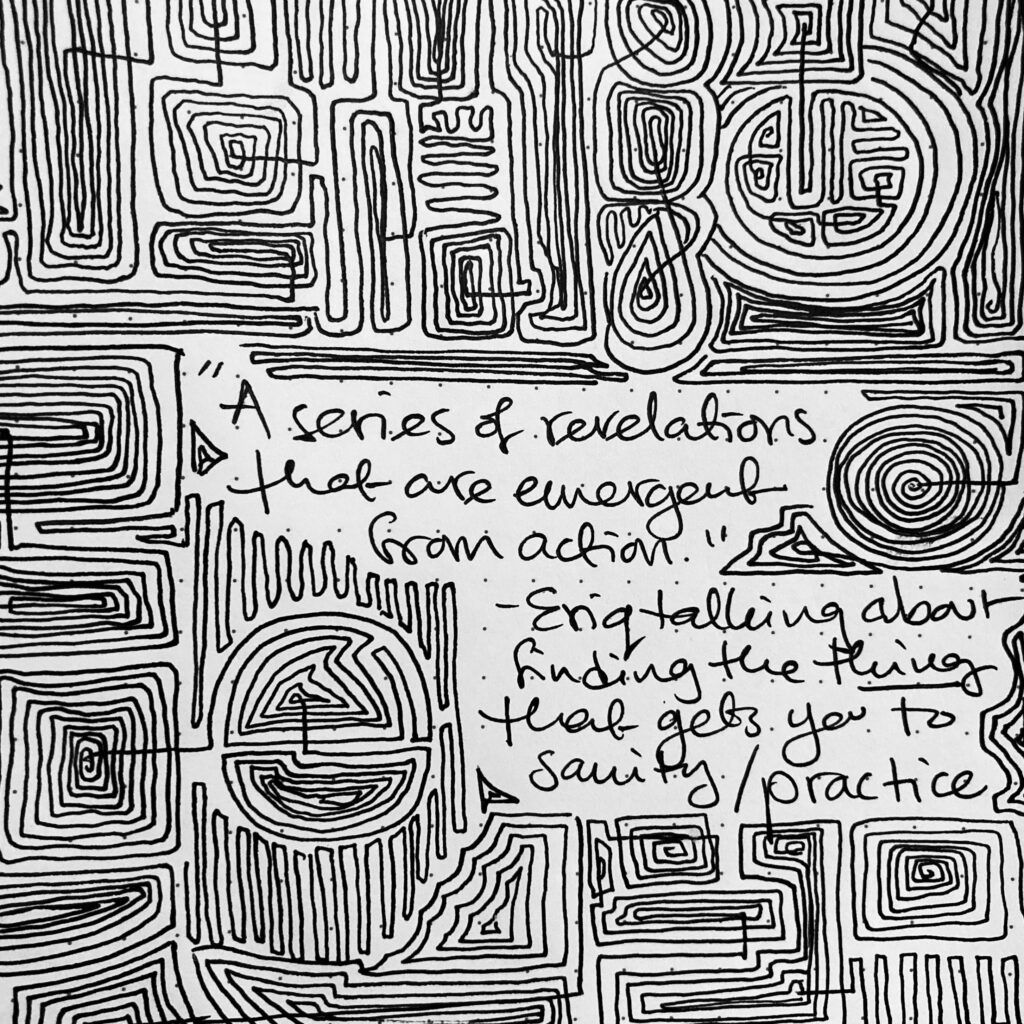If we could just—just stop. For one year. If everybody could stop publishing their poems. No more. Stop it. Just—everyone. Every poet. Just stop.
But of course that’s totally unfair to the poets who are just starting out. This may be their “wunderjahr.” This may be the year that they really find their voice. And I’m telling them to stop? No, that wouldn’t do.
But wouldn’t it be great? To have a moment to regroup and understand? Everybody would ask, Okie doke, what new poems am I going to read today? Sorry: none. There are no new poems. And so you’re thrown back onto what’s already there, and you look at what’s on your own shelves, that you bought maybe eight years ago, and you think, Have I really looked at this book? Might have something to it. And it’s there, it’s been waiting and waiting. Without any demonstration or clamor. No squeaky wheel. It’s just been waiting.
If everybody was silent for a year—if we could just stop this endless forward stumbling progress—wouldn’t we all be better people? I think probably so. I think the lack of poetry, the absence of poetry, the yearning to have something new, would be the best thing that could happen to our art. No poems for a solid year. Maybe two.
—Nicholson Baker, The Anthologist
Tag: creative practice
On a call with some of the folks from the Wayward community the other night, someone shared a conversation they’d had with their therapist about emerging into 2021. PTSD, the therapist pointed out, doesn’t generally rear its head while soldiers are on the battlefield. It comes later, when things are supposedly “safe” or “better” and everyone around us is celebrating or relaxing and we’re only just beginning to experience the full impact of what we’ve been through.
It hit me like a pile of bricks.
I feel so far away from my creative self right now. The only thing I keep finding comfort in is learning that a lot of other friends are in the same boat—that maybe a majority of us are actually grieving the loss of whatever creative spaciousness or clarity we’d managed to eke out in the solitude of Quarantine. Or maybe we’re all just braced for the next wave of closures and infections and losses, or finally feeling the full weight of the closures and infections and losses that have already come and gone.
My first family COVID deaths happened in quick succession within the last two weeks—far past the peak of the Pandemic. What does that mean? How am I supposed to feel? They lived in another country, separated by oceans and continents and the 17 years since I saw them last in person. But they were family—a community I struggle to feel connected to at the best of times, even though I yearn for it desperately. I’m vaccinated. My parents are vaccinated. Nothing quite like thinking you’re “safe” and then realizing grief can still snake its way into your circles, no matter the care you take.
I’m thinking, too, about the way I keep brushing off this mental and creative slump in conversation, waving my hands and explaining to friends that “it’s just a phase” and “things will feel better as soon as I get stuck into my next project.”
“This always happens,” I say. “I always pull through.”
But something I didn’t account for is living in house alongside my dad, one of my primary sources of creative inspiration and cheerleading growing up, who genuinely has lost contact his creative self. Dementia is not the seasonal cycle that I usually comfort myself with when I think of the ebb and flow of creative embodiment. It’s a far darker and more linear decline. It makes the threat of permanent loss in these low tide seasons feel more real.
It’s not to say that I’m over here worrying about imminently losing all my marbles. More that…I don’t know. Maybe that I haven’t been making enough space for the enormity of everything. When I make light of this season—either because I’m afraid of it, or embarrassed that it’s happening to me, or something else—I rob myself of the chance to feel my way through into whatever comes next.
Austin shared some lovely sketchnotes from a talk on writing as a form of prayer yesterday, and this bit really leapt out at me:
Out of all the interesting subjects they discussed, I think I was most taken by Father Martin’s explanation of how his vow of poverty affects his writing. Martin is “editor at large” at America Magazine, and as he explained it, he basically has the freedom to write about whatever he wants. The same goes for his books: All of his royalties go to the magazine, so he’s mostly unconcerned about sales. […] Writing, for him, is never a struggle.
Absence of pressure as a prerequisite for pleasure. I love this.
I’ve still got Luke’s phrase “financial profit is not possible here” reverberating around my skull from the launch of GOES yesterday, which has me wondering:
What happens to a creative practice when you proactively divorce it from capitalism? (And what form does that divorce need to take in order to be an effective means of culture-shift for the individual and their wider community?)
I think of this as the inverse of those well-meaning friends and relatives whose first words after seeing something you’ve made is “You could sell these on Etsy!” You might as well say “You could siphon all the joy out of this practice and replace it with crippling performance anxiety!”
Who are the people in my life whose response to any nascent creative work is: “Have you considered trying to make this as un-commercially-viable as possible?”
And more importantly: what allows someone to follow that instinct?
Shing and I have talked a little lately about feeling the hustle go out of us in our 30s, and how following the course of that ebb is a privilege earned by hustling a lot in our earlier career days (alongside other factors, of course). Overfunding a Kickstarter or landing an unexpectedly lucrative illustration gig—or even, on a more sustainable scale, running a Patreon—is a means of buying your own creative freedom for a spell, but all of these still involve an initial influx of cash. You have to pay to play.
(The string layer is back on.)
On April 16th, 2018, a friend of mine began a 100 Day Project—a collection of self portraits in ink, framed as a meditation on gender.
The tiny illustrations began to pile up: two weeks, 100 days, a year.
They kept drawing.
At 862, they stopped sharing to Instagram, but said they would probably keep going in private. (We love to see it.)
And then, a couple days ago, a text:

I asked how they were feeling about the milestone.
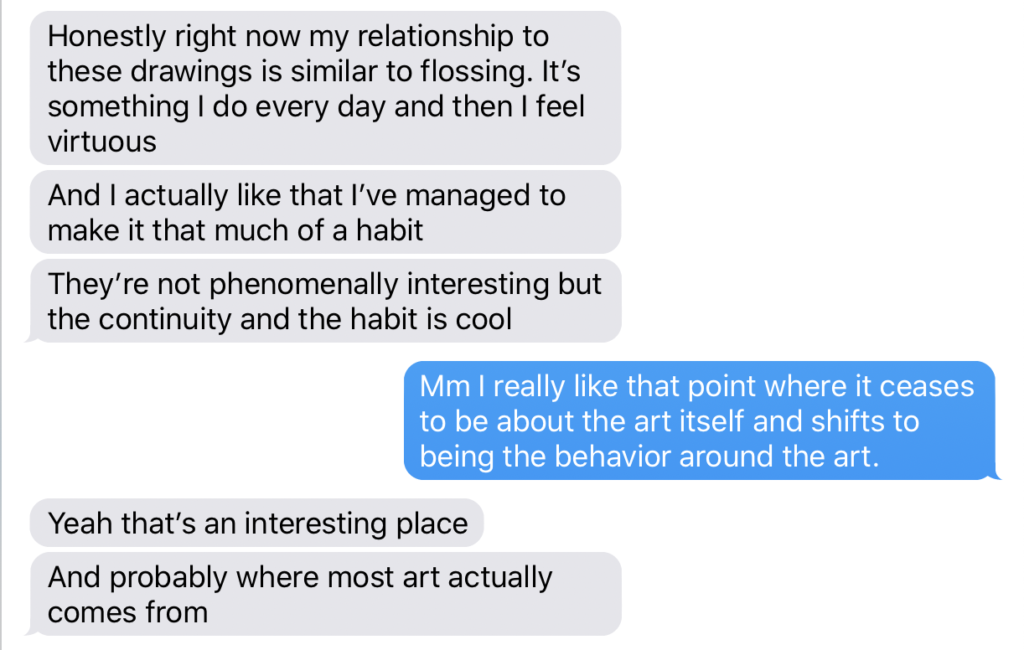
And now I’m laughing thinking about Benoit Blanc and donuts, because this is how I feel at moments like this—screenshotting a perfectly normal text conversation because something about it makes me think “HANG ON”.
Not the art, but the behavior around the art.
A donut! One central piece, and if it reveals itself the fog would lift, the arc would resolve, the slinky become unkinked…
It feels right, at least in relation to my own practice, which is often very much predicated on rules and rituals. (30 Days of Portraits. 100 Demon Dialogues. 1000 words a day.)
These are all projects where the structure of the undertaking supersedes the content. Fixating on the satisfaction of completing another link in the chain allows my less-than-perfect artistic skill to slip past the Watcher at the Gate undetected. Success is defined as adherence to the practice, not excellence in the craft.
The joke, of course, is that they’re one and the same.
There’s a paragraph from Twyla Tharp’s The Creative Habit that lodged firmly in my brain when I first read it in college. (I loaned my copy of the book to a friend years ago and it was only recently returned it to me, so this is the first chance I’ve had to go back and reread it in a long, long while.)
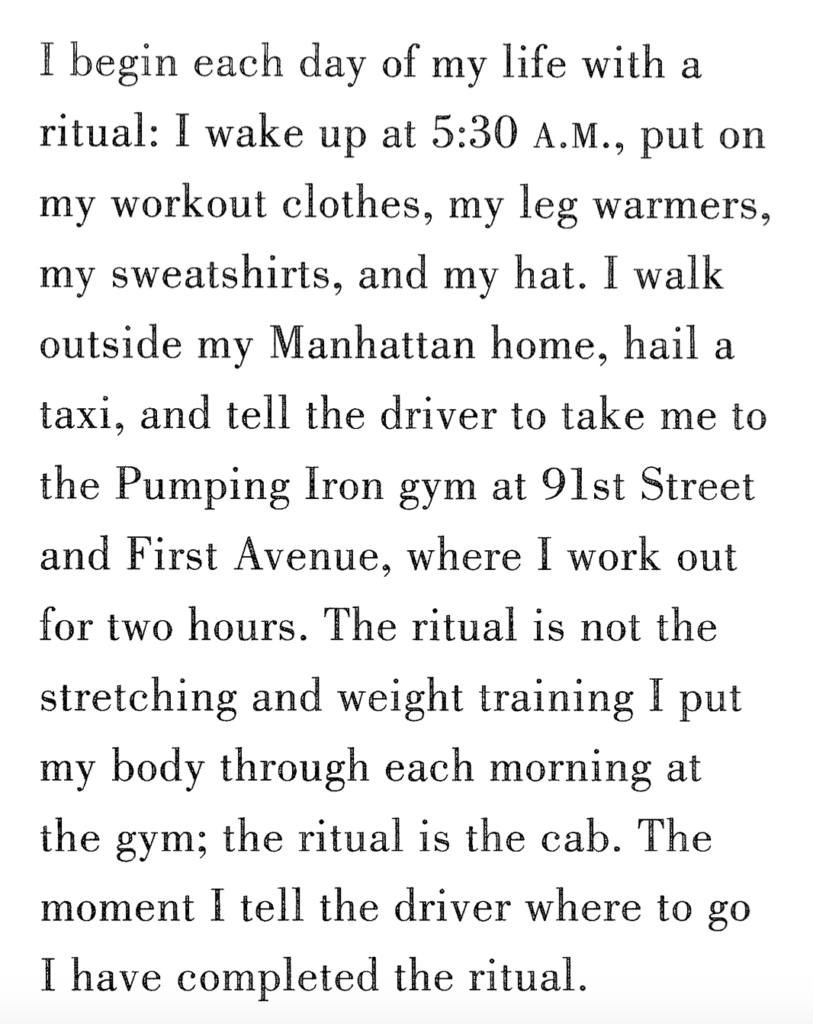
THE RITUAL IS THE CAB.
Eh-hem. Anyway. She goes on:
Turning something into a ritual eliminates the question, Why am I doing this? By the time I give the taxi driver directions, it’s too late to wonder why I’m going to the gym and not snoozing under the warm covers of my bed. The cab is moving. I’m committed. Like it or not, I’m going to the gym.
The ritual erases the question of whether or not I like it. It’s also a friendly reminder that I’m doing the right thing. (I’ve done it before. It was good. I’ll do it again.)
This bit at the end! The question of “whether or not I like it” immediately countered with the truth that if this ritual is something I have built that will carry me towards things I have decided are meaningful to me, then it will automatically be the right thing.
But even when the right thing has proved, time and time again, to be rich, pleasurable, surprising, rewarding, and thrilling, I still have a brain that fixates on the times it is not. Sometimes it is infuriating, terrifying, or disappointing (although almost always those feelings come at the start, not during the act itself—or after the finish). I latch onto the negatives, drowning in avoidance, believing I can think my way around them.
Tharp’s model requires a clear-eyed statistician’s view—an assessment of the facts. And the fact is I feel good about the act of creation far more often than I feel bad about it. The ritual becomes a method of tipping over the edge into that inexorable slide—the point where it would be far more work to turn back than it is to go forward. The point where you can’t help yourself.
This is the mantra I need going into my next project, quaking in my boots because it all feels new and beyond my capacity or control:
I’ve done it before. It was good. I’ll do it again.
My friend Chloe threw up a Twitter thread this morning about trying to learn to dive as an 8-year-old (something I also spent many early years terrified of doing).
I’ve never forgotten the professor on my orals board who listened to all the questions and considerations I’d thrown into coming up with my thesis concept before asking
“Do you really have to go through this orgy of anxiety before you’re able to begin any creative project?”
GOD, IT MADE ME MAD.
Of course I worry about this all the time. WE ALL WORRY ABOUT THIS ALL THE TIME. But if I’m worrying at something, claws sunk into a paradox that feels irresolvable and keeps me up at night and makes me hold up the line time and time again, tears streaming down my face because I want to do it and I know I can and I want to and I can if I just stand there a little longer I’ll get there I know it—
That’s how I know I’m on the right track.
“Dove in, sobbing. Came out laughing.”
It’s hard right up until the moment it becomes simple. I don’t think anyone’s ever done a better job articulating how I get things done.
[Just realized I wrote what amounts to another version of the same blog post two years ago, except it’s got more Ghost Rider in it. Go figure.]
It’s Day Five of the Inner Critic Investigation series I’m collaborating on with writing coach Deb Norton! Our goal is to help you develop a dialogue with your inner monologue and better understand why your brain keeps trying to stop you from making work.
The rules are as follows:
- Get a pen and a sheet of paper.
- Set a timer for six minutes.
- WRITE. Ask your inner critic the question and find out what they have to say. Keep your pen moving, even if you’re writing lies or “Blah blah blah” over and over.
Here’s today’s prompt:
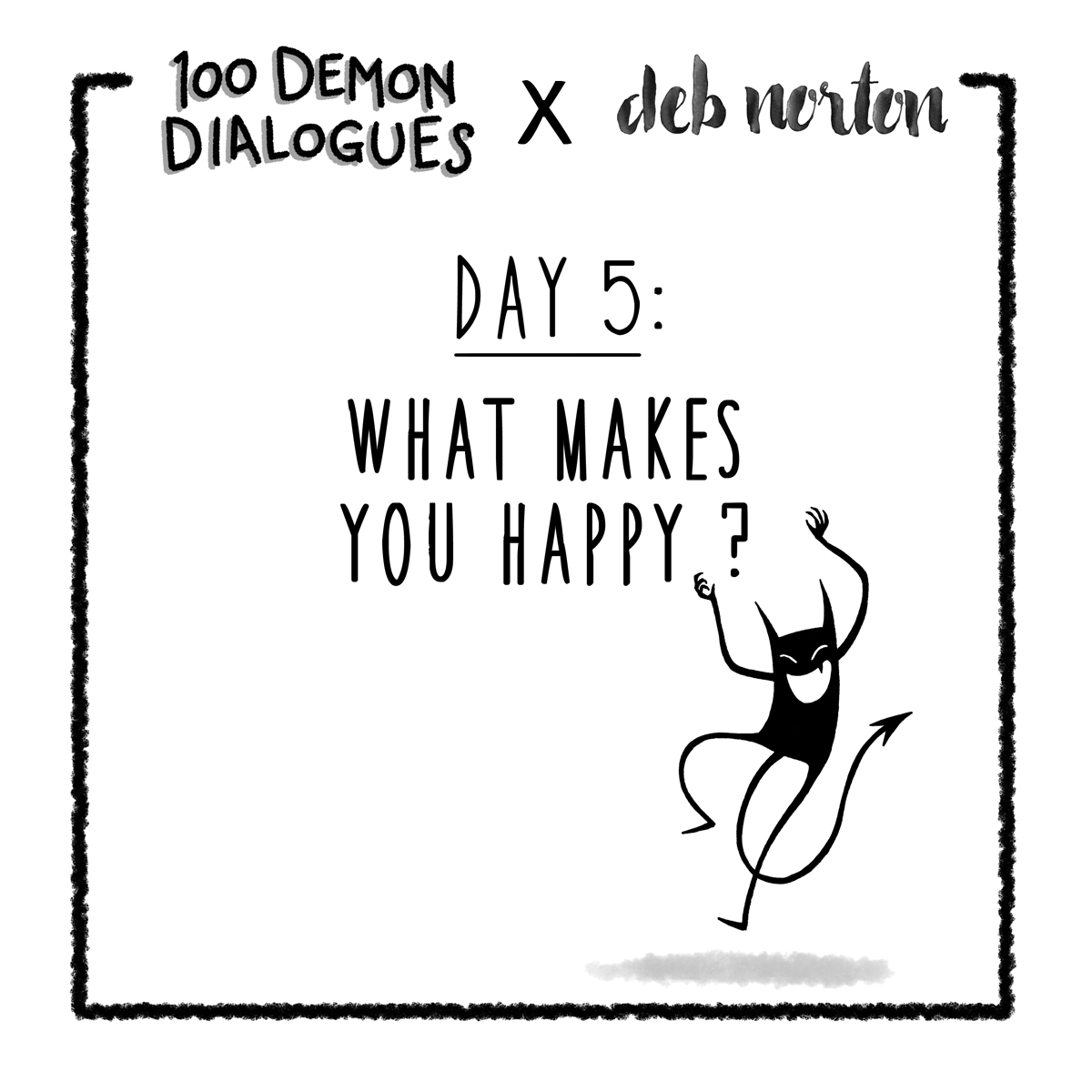
Often our Inner Critics are busy being, well, critical. What makes them truly happy? The knowledge that they’ve successfully protected you from failure. A heaping plate of junk food. Convincing you to do what they want. Shiny pebbles. Getting to see a movie. You can also try moving from the prompt “I’m happiest when you…”
If you’re feeling brave, share your results from these exercises in the comments below, or email them to me (lucypcbellwood@gmail.com) and I can post them anonymously. I would love to have a collection of Critic Quotes at the end of this experiment.
If you want to listen in to a whole conversation about this Creative Resistance stuff, check out this talk I just recorded with Deb.
NOW GET WRITING!
It’s Day Four of the Inner Critic Investigation series I’m collaborating on with writing coach Deb Norton! We’re hoping these prompts can give you all some insight into what your little jerks are thinking and feeling as they go about trying to stop you from making creative work.
The rules are as follows:
- Get a pen and a sheet of paper.
- Set a timer for six minutes.
- WRITE. Ask your inner critic the question and find out what they have to say. Keep your pen moving, even if you’re writing lies or “Blah blah blah” over and over.
Here’s today’s prompt:
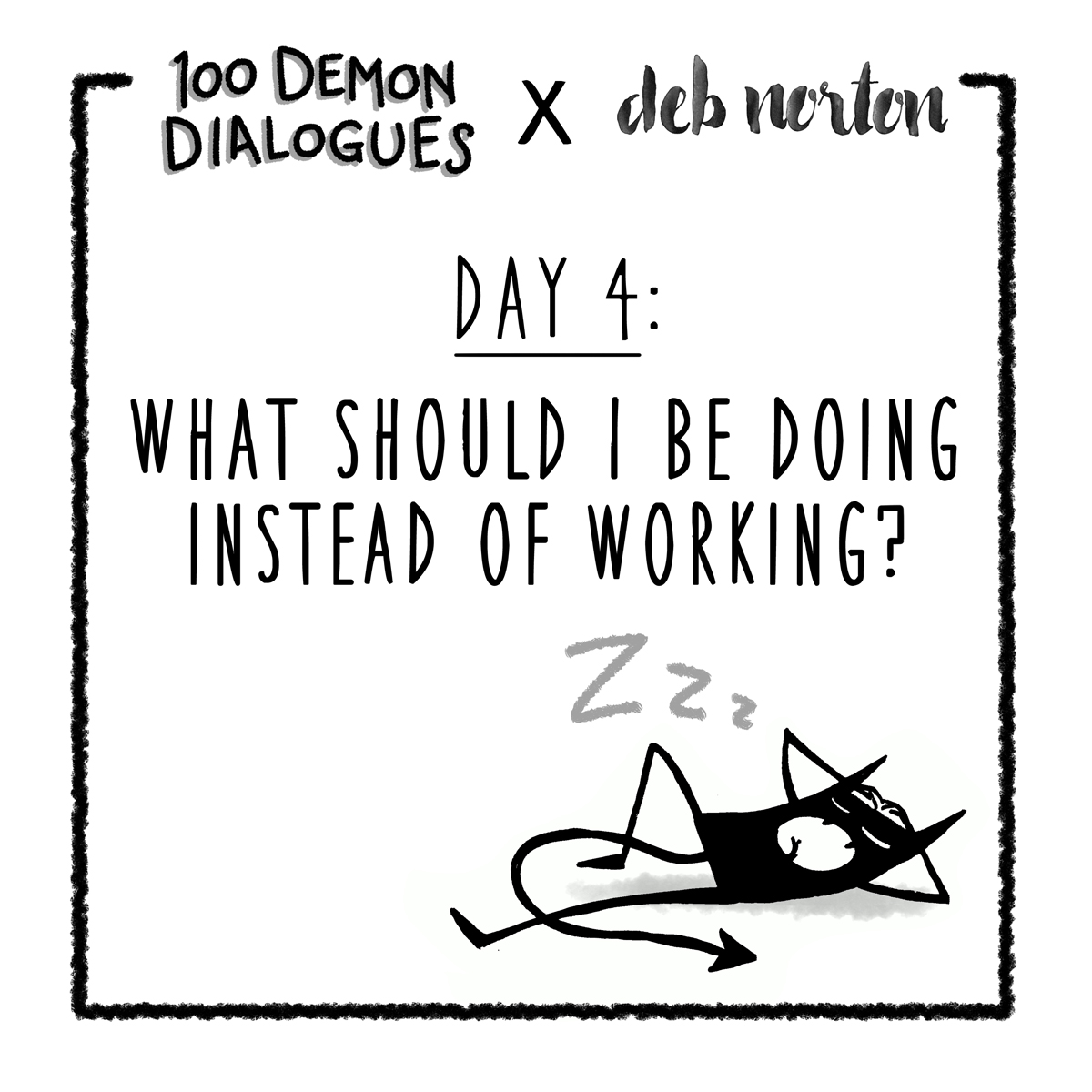
The Inner Critic loves to tell us about all the other things in the world that it believes are more important than working on our creative projects, from taking naps to volunteering at the local food bank. Whether it’s trying to tempt you or shame you, write it all out in a list. What does it think you should be doing instead?
There will be a new prompt once per day for the rest of the week. This is a great exercise to do as a warmup before you sit down to tackle your daily NaNoWriMo goal, or just launch into creative work of any nature. There are no wrong answers. Go wild.
If you want to listen in to a whole conversation about this Creative Resistance stuff, check out this talk I just recorded with Deb.
NOW GET WRITING!
It’s Day Three of the Inner Critic Investigation series I’m collaborating on with writing coach Deb Norton! We’re hoping these prompts can give you all some insight into what your little jerks are thinking and feeling as they go about trying to stop you from making creative work.
The rules are as follows:
- Get a pen and a sheet of paper.
- Set a timer for six minutes.
- WRITE. Ask your inner critic the question and find out what they have to say. Keep your pen moving, even if you’re writing lies or “Blah blah blah” over and over.
Here’s the prompt:
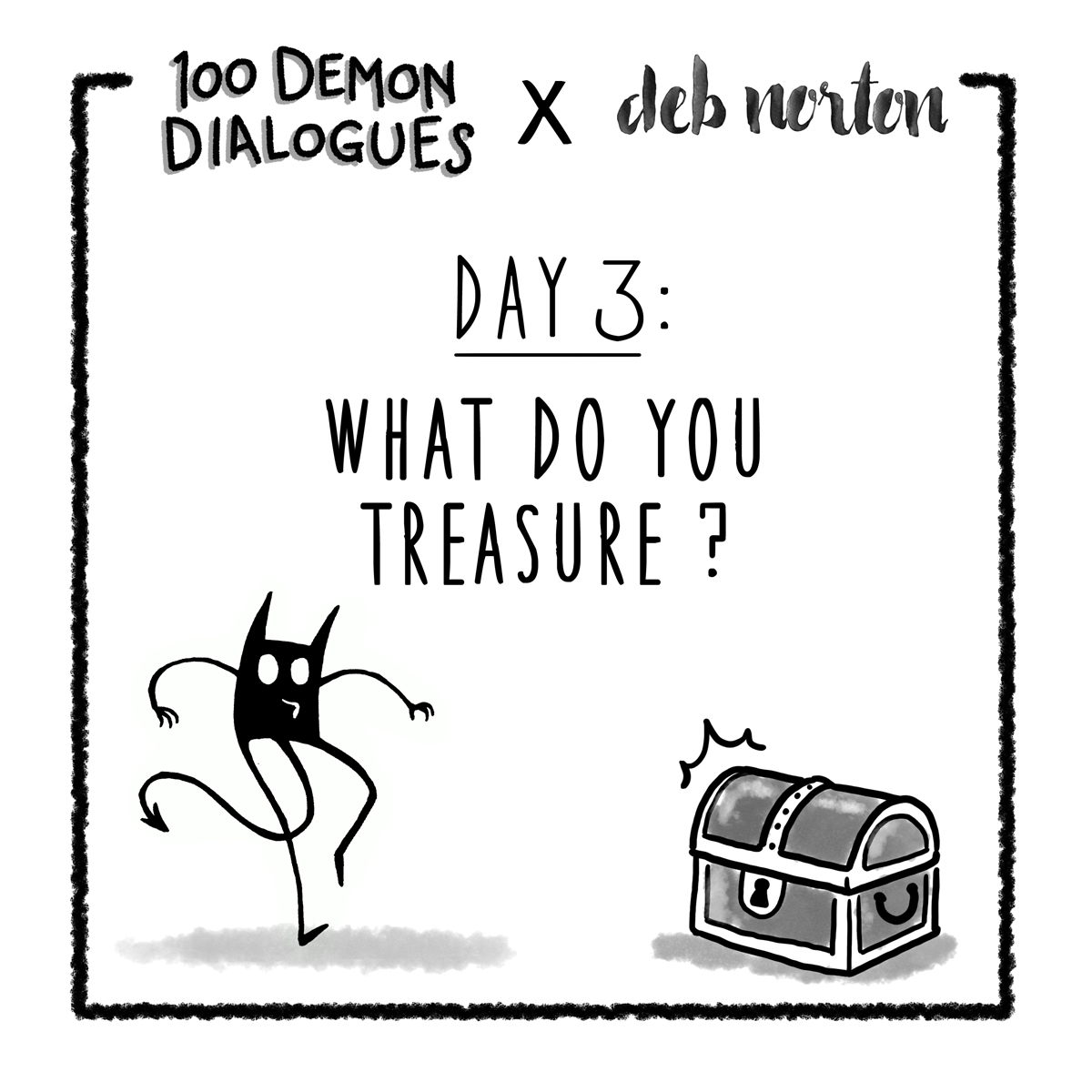 What is precious to your Inner Critic? What do they value above all else? Fame? Security? The knowledge that they’ve successfully prevented you from making a mistake?
What is precious to your Inner Critic? What do they value above all else? Fame? Security? The knowledge that they’ve successfully prevented you from making a mistake?
There will be a new prompt once per day for the rest of the week. This is a great exercise to do as a warmup before you sit down to tackle your daily NaNoWriMo goal, or just launch into creative work of any nature. There are no wrong answers. Go wild.
If you want to listen in to a whole conversation about this Creative Resistance stuff, check out this talk I just recorded with Deb.
NOW GET WRITING!
